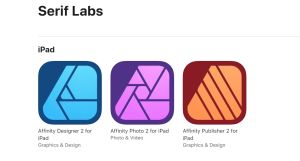 Windows 10 is now 10; how does it compare to other Microsoft OSes?
Windows 10 is now 10; how does it compare to other Microsoft OSes?
There is a generally accepted idea that the world is moving faster and faster. The reality actually supports it: what was the stuff of science fiction a couple of dozen years ago is here now, used in everyday life by millions of people all over the world. The examples are numerous, from tablets through wireless earbuds to Starlink. Plus, there is Moore's Law and the Singularity theory.
In the realm of operating systems, though, things seem to move at a less hectic pace. Different versions of Windows score differently in user ratings, but pretty much all of them stay current and are relied on longer than some hot apps and startups that make waves and then fall into oblivion.
Windows 10, which turns 10 on July 29, 2025, is one of them; to celebrate the occasion, we collected some data about the longevity of Microsoft’s operating systems and why this iteration was loved while that (yes, Vista, we are talking about you) — not.
The life of major Windows operating systems
Just a bit of explanation: “life” here means the period through which the developer releases updates for the product, extended support programs included.
So here is an overview of the lifespan of the most iconic Microsoft operating systems, plus the reasons why they succeeded or failed.
- Windows XP. Released on October 25, 2001, it kept the flagship title for 12.5 years, until April 8, 2009. This is probably the most successful Windows OS thus far: first off, its official support period is unparalleled, and secondly, it is still used here and there throughout the world. Why? Because it was simple and stable, did not ask for anything out of the ordinary in terms of hardware, and managed to foster the nostalgic vibe that kept people glued to it for longer than expected.
- Windows Vista. While enjoying the standard 10.2 years of official support — same as most other Microsoft OSes — this version, released in 2007, failed to replace Windows XP. Vista had many compatibility issues and felt bloated and slow, but under the hood, it was sort of a testing bench that helped crystallize solutions for future Windows systems.
- Windows 7. When this OS was released in 2009 — only two years after Vista — it became clear that Microsoft was looking for some new pattern of developing and marketing its core products. This version received updates for the 10.2 years, and was used after the final support expiration date extensively, but not as much as Windows XP. Windows 7 marked the point when Microsoft began to pay more attention to the look-and-feel of its products, presumably seeking to take on Apple in the realm where it’s been dominating for years.
- Windows 8 and Windows 8.1. These two are considered separately from each other for the reason of longevity: Windows 8, released in 2012, enjoyed only about 6 years of support, while Windows 8.1, which followed in 2013, was on the developers’ agenda for 9.2 years, up to January 10, 2023. The version was largely perceived as fast and secure, but the (more or less) experimental Metro UI was unpopular among desktop users.
- Windows 10. So here we are, only two months from the end of official support of this version, and Windows 10, as we mentioned in a couple of pieces dedicated to the subject, is still going strong, tying with Windows 11. Will it be as long-lived as Windows XP? Time will tell, but so far, it looks like the chances of that are quite good.
Happy 10th anniversary, Windows 10!



